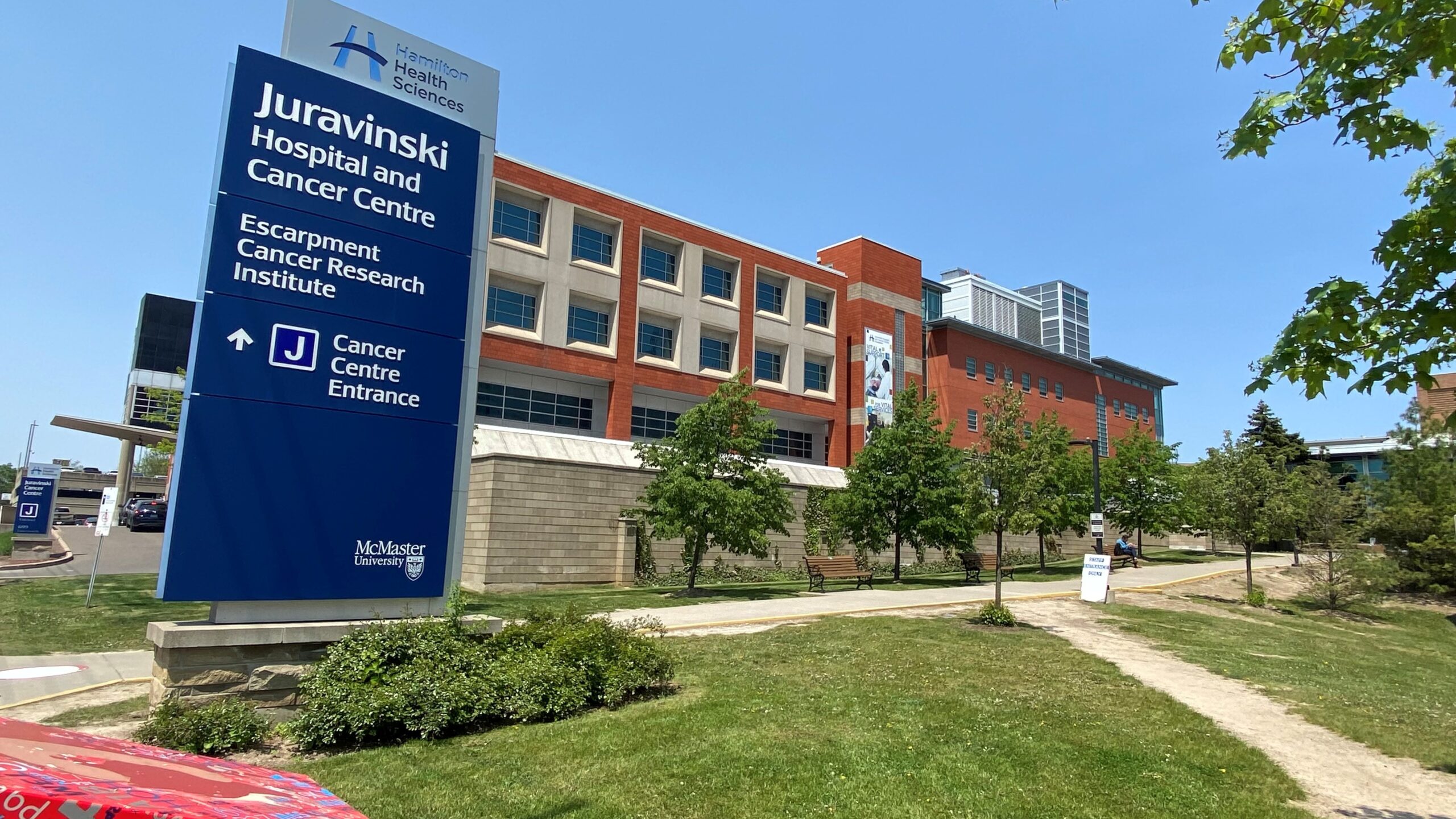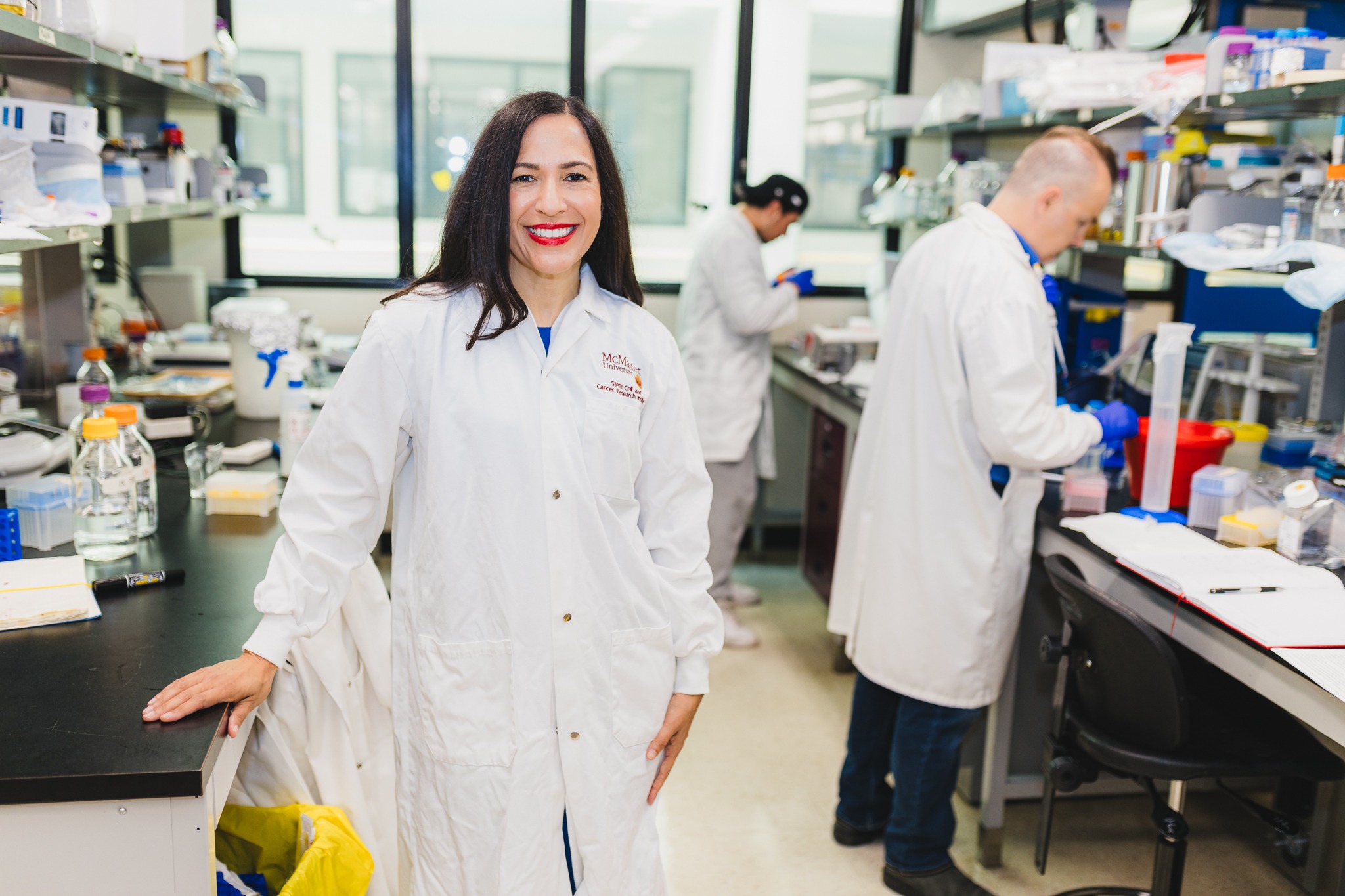
JHCC adds innovative treatment option for liver cancer patients
Highly effective treatment with few if any side effects
A type of radiation therapy that’s highly successful in shrinking certain cancerous liver tumors is now available at Hamilton Health Sciences (HHS) Juravinski Hospital and Cancer Centre (JHCC).
Niagara resident Ron Clement was the first patient in the region to receive this treatment, called radioembolization, at JHCC. His procedure took place in January, and the hospital expects to treat two or three patients per month.
“The addition of radioembolization at JHCC is wonderful news for our patients.” — Dr. Sabarinath Nair

Ron Clement is the first patient in the region to receive radioembolization at our Juravinski Hospital and Cancer Centre.
Side effects can include abdominal pain and tiredness, and recovery can take one to two weeks. However, it’s common for patients to feel back to normal in less time. Just a few days after Clement’s procedure, the retired auto worker said he was back to enjoying favourite hobbies like birdwatching and spending time with his grandchildren.
“I felt tired for a few days, and slight discomfort in my abdomen, but this was easily managed with over-the-counter pain medication,” says Clement, 67, who was diagnosed with liver cancer in 2018 and treated with surgery. A 2021 reoccurrence was treated with radiofrequency ablation, which uses heat to destroy diseased tissue.
New treatment close to home
When more tumors appeared in Clement’s liver in 2023, his health care team recommended the new treatment of radioembolization. Prior to JHCC offering this procedure, patients were referred to Toronto or London hospitals. But with the introduction of radioembolization at JHCC, Clement was able to undergo this treatment close to home.

Dr. Sabarinath Nair, JHCC interventional radiologist.
“The addition of radioembolization at JHCC is wonderful news for our patients,” says Dr. Sabarinath Nair, a JHCC interventional radiologist with the hepato-pancreato-biliary (HPB) team. Liver cancer falls under the category of HPB cancers, along with pancreas, gall bladder and bile duct cancer. HPB cancers are serious and complex with high mortality rates. They typically require a range of treatments.
“The addition of this procedure at JHCC speaks to the high level of expertise on our HPB team,” says Neil Johnson, vice president of oncology for HHS and Juravinski Hospital site executive. “The JHCC is one of only a few Cancer Care Ontario designated lead centres for HPB cancer care in the province.”

Leslie Gauthier

Neil Johnson
“The addition of radioembolization also speaks to our exceptional nuclear medicine and interventional radiology teams supporting this procedure,” adds Leslie Gauthier, vice president of clinical support services and surgery for HHS.
How radioembolization works
Radioembolization is a minimally invasive procedure, meaning patients return home from hospital the next day and experience few if any side effects. Once the procedure becomes more established at JHCC, patients will return home the same day.
“I was really impressed by their teamwork. They all work together to give patients the very best treatment.” — Ron Clement, liver cancer patient

The addition of radioembolization speaks to the high level of expertise at Juravinski Hospital and Cancer Centre.
This procedure is performed by passing a small catheter into a liver artery with a cut so tiny that only a bandage is needed to cover it afterwards. Doctors insert microscopic radioactive particles called Y-90 directly in blood vessels leading to the tumor, using the catheter. The tiny Y-90 particles, only about one-millionth of a millimeter, go directly into the tumor, where they emit radiation from the inside, killing the tumor.
“We kill the tumor while preserving the rest of the liver, so patients maintain liver function,” says Nair. “After the procedure, all the patient has is a bandage at the groin or hand, where their interventional radiologist accessed the artery. We’ve done quite a lot of work inside the patient, but on the outside there’s nothing but a small nick on the skin.”
Radioembolization is personalized for each patient, based on such things as the location of their cancer, size of tumor and whether it has spread to other areas of the body.
“It’s about treating people based on their exact situation,” says Nair. “Everyone’s disease is different, and there are cases were despite our best efforts we can’t control the cancer. But in many cases we can control the disease, extend people’s lives and improve their quality of life.”
Preparing for treatment
Clement, the patient, had high praise for JHCC’s collaborative approach to patient care. “I was really impressed by their teamwork,” he says. “Everyone was fantastic. They all work together to give patients the very best treatment.”
Two weeks before undergoing this treatment, patients visit JHCC to have a mapping angiogram. This special x-ray provides a roadmap of the arteries supplying the liver. It’s done by passing a catheter into the liver artery from the groin to map out the arteries.
A nuclear medicine scan is also performed using advanced software to calculate the correct dose of Y-90.
Pathway to a cure
The only cure for liver cancer is a transplant, but not everyone is eligible. For example, someone with larger liver tumors wouldn’t be a candidate for a transplant. Radioembolization can help these patients qualify for a life-saving liver transplant by shrinking large liver tumors.
“Suffice to say, this treatment is applicable in many stages of the disease, even offering a way to a transplant which is the only true cure,” says Nair.



